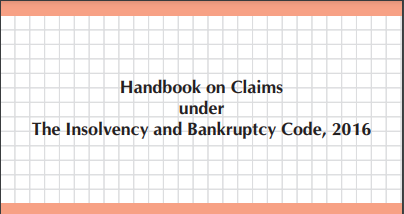Handbook on Claims under The Insolvency and Bankruptcy Code, 2016
INTRODUCTION
Before the introduction of the Insolvency and Bankruptcy Code in 2016 (IBC), several legal frameworks were available for helping companies in financial stress. Also, the resolution and jurisdiction were with multiple fora leading to delays in the process. This prompted introduction of a new comprehensive law to provide mechanism for insolvency resolution, in a time bound manner, to enable maximisation of the value of assets, with a view to promote entrepreneurship, availability of credit and balance the interest of all the stakeholders. IBC also changed the concept and “in case of default, the debtor in possession changes to creditor in control regime” for Corporate Insolvency Resolution Process (CIRP) under IBC which is a paradigm shift from the existing remedies under various laws.
Claim is considered to be the starting point of any insolvency and bankruptcy process under The Insolvency and Bankruptcy Code, 2016 (IBC).
“Claim” as defined under section 3(6) of IBC means-
(a) a right to payment, whether or not such right is reduced to judgment, fixed, disputed, undisputed, legal, equitable, secured or unsecured;
(b) right to remedy for breach of contract under any law for the time being in force, if such breach gives rise to a right to payment, whether or not such right is reduced to judgment, fixed, matured, unmatured, disputed, undisputed, secured or unsecured;

